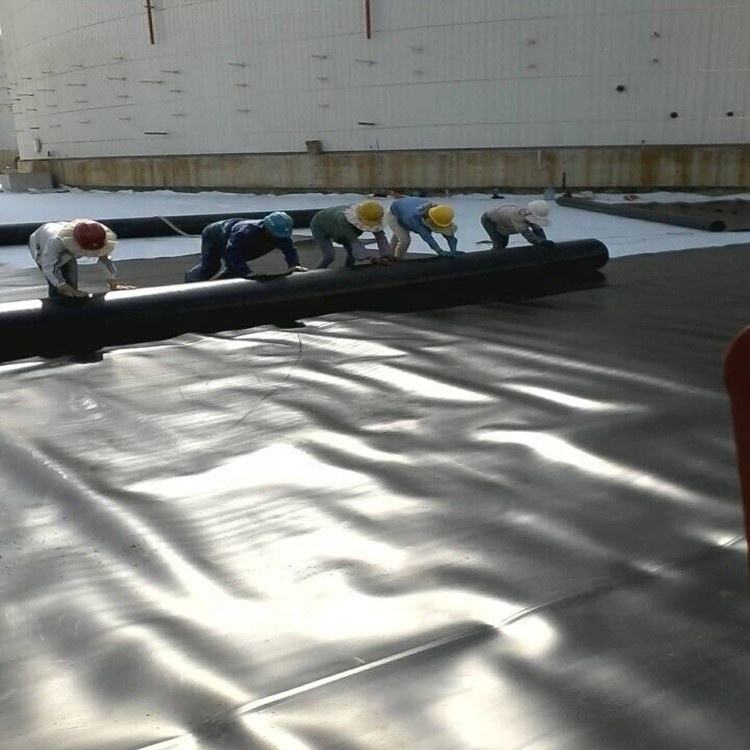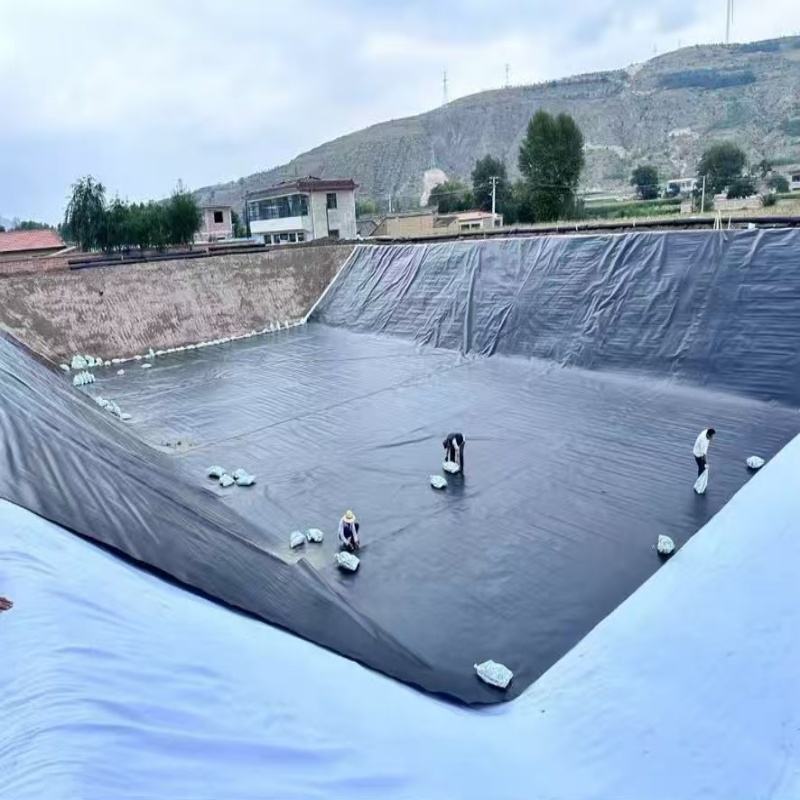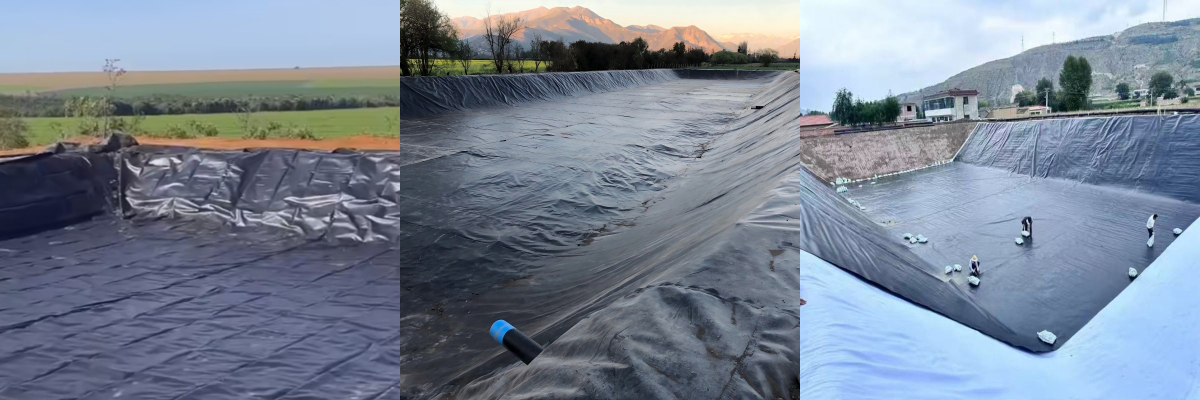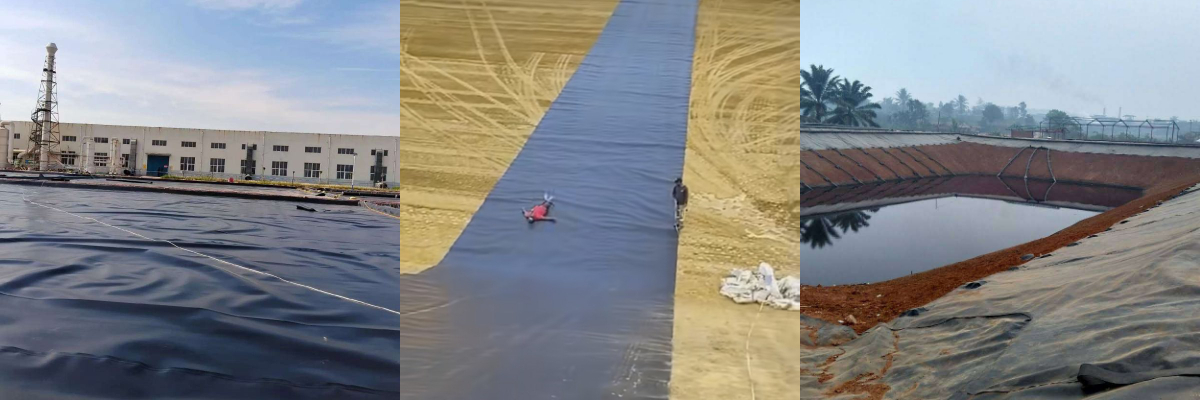1.5mm HDPE Dam Liner
Exceptional Durability: Withstands high mechanical stresses, chemical exposure, and UV radiation, ensuring decades of reliable service.
Superior Seepage Control: Prevents fluid loss and contamination, safeguarding water resources and ecosystems.
Cost-Effective Sustainability: Reduces maintenance needs and supports recycling, aligning with environmental stewardship goals.
1.5mm HDPE Dam Liner: A Robust Solution for Modern Hydraulic Engineering
Introduction
In the evolving landscape of hydraulic engineering and environmental protection, the demand for high-performance materials capable of withstanding rigorous operational conditions has grown exponentially. Among these materials, 1.5mm High-Density Polyethylene (HDPE) Dam Liner has emerged as a preferred choice for large-scale infrastructure projects, including dams, reservoirs, and hazardous waste containment systems. This article provides a detailed exploration of 1.5mm HDPE Dam Liner, focusing on its technical specifications, performance advantages, environmental benefits, and practical applications.
Technical Specifications
Table 1: Physical and Mechanical Properties of 1.5mm HDPE Dam Liner
| Property | Specification | Standard |
Thickness | 1.5 mm ± 0.15 mm | ASTM D1709 |
Density | 0.94–0.97 g/cm³ | ASTM D1505 |
Tensile Strength (MD/TD) | ≥ 25 MPa | ASTM D638 |
Elongation at Break (MD/TD) | ≥ 500% | ASTM D638 |
Tear Resistance (MD/TD) | ≥ 100 N | ASTM D1004 |
Puncture Resistance | ≥ 200 N | ASTM D4833 |
Carbon Black Content | 2–3% | ASTM D1603 |
UV Resistance | Excellent (≥ 1,000 h) | ASTM G155 |
Table 2: Chemical Resistance of 1.5mm HDPE Dam Liner
| Chemical | Resistance Level |
Freshwater/Saltwater | Excellent |
Acids (pH 1–12) | Good–Excellent |
Alkalis (pH 8–14) | Good–Excellent |
Oils and Greases | Fair–Good |
Organic Solvents | Fair |
Alcohols | Fair–Good |
Heavy Metals (e.g., Pb, Cd) | Fair–Good |
Performance Characteristics
1. Enhanced Mechanical Strength
The 1.5mm thickness of this HDPE liner significantly elevates its mechanical performance compared to thinner alternatives. As shown in Table 1, it exhibits a tensile strength of ≥25 MPa, making it capable of withstanding high tensile stresses during installation and long-term operation. The elongation at break of ≥500% ensures flexibility, allowing the liner to conform to uneven substrata without cracking. Additionally, the puncture resistance of ≥200 N provides robust protection against sharp objects, such as rocks or construction debris, which is critical in rugged terrain.
2. Superior Impermeability
The primary function of a dam liner is to prevent fluid seepage, and the 1.5mm HDPE Dam Liner excels in this regard. Its low permeability coefficient (<1×10⁻¹³ cm/s) ensures effective containment of water, chemicals, and waste. This property is particularly vital in large-scale dams, where seepage could compromise structural stability, or in hazardous waste facilities, where leakage poses environmental risks.
3. Chemical and Environmental Resistance
Table 2 highlights the liner’s broad chemical resistance. It withstands exposure to acids (pH 1–12), alkalis (pH 8–14), and salts, making it suitable for diverse environments, from coastal reservoirs to industrial wastewater ponds. The carbon black content (2–3%) enhances UV stability, enabling the liner to resist degradation from prolonged sunlight exposure. Furthermore, its resistance to microbial attack and oxidation ensures long-term performance in humid or chemically aggressive settings.
4. Durability and Longevity
The combination of mechanical robustness and chemical resilience translates to a prolonged service life. Unlike thinner liners, the 1.5mm HDPE variant requires fewer repairs and replacements, reducing lifecycle costs. Its ability to maintain integrity under extreme temperatures (–60°C to 80°C) further underscores its suitability for projects in harsh climates.
Environmental Benefits
1. Water Resource Conservation
By minimizing seepage, the 1.5mm HDPE Dam Liner helps conserve water in arid regions, supporting agricultural irrigation and municipal water supplies. This is particularly critical in areas facing water scarcity, where every drop of stored water must be preserved.
2. Pollution Prevention
In waste containment applications, the liner acts as a barrier against soil and groundwater contamination. Its resistance to heavy metals and organic pollutants ensures that harmful substances remain isolated, protecting ecosystems and public health.
3. Sustainable Material Use
HDPE is a recyclable polymer, and at the end of its service life, the liner can be repurposed into new products. This aligns with circular economy principles, reducing waste and environmental footprint. Additionally, its long lifespan minimizes the need for frequent replacements, further lowering resource consumption.
Installation and Maintenance
Installation Best Practices
Proper installation is critical to maximize performance:
Subgrade Preparation: Ensure the base is smooth, compacted, and free of sharp debris.
Liner Deployment: Unroll the liner carefully to avoid wrinkles or stress. Overlap seams by 15–30 cm.
Welding: Use hot-air or extrusion welding to create airtight seams. Test welds for integrity.
Anchoring: Secure edges with concrete blocks or soil to prevent displacement.
Maintenance Guidelines
While durable, regular inspections are recommended:
Check for punctures, tears, or seam failures.
Clear debris from the liner surface to prevent abrasion.
Monitor UV exposure in open-air installations.
Applications
The 1.5mm HDPE Dam Liner is ideal for:
Large dams and reservoirs.
Industrial wastewater ponds.
Mining tailings ponds.
Landfill leachate containment.
Aquaculture ponds.
Conclusion
The 1.5mm HDPE Dam Liner represents a pinnacle of engineering innovation, offering unmatched mechanical strength, impermeability, and environmental resilience. Its versatility makes it suitable for demanding applications, from water conservation to hazardous waste management. By combining durability with sustainability, it addresses both immediate engineering needs and long-term ecological preservation.












